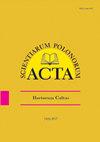草铵膦喷施与喷施对百里香播种杂草的防治效果比较
IF 0.7
4区 农林科学
Q4 HORTICULTURE
引用次数: 0
摘要
这项为期四年的研究的目的是比较两次火焰除草与喷洒草铵膦对田间播种的普通百里香杂草的控制效果。在百里香出现前或6天后立即施用火焰(90 kg丙烷∙ha-1),草铵膦(450 g∙ha-1)与第一次火焰在同一天施用。百里香的出苗开始于播种后15-18天,非常不均匀,在某些年份延长至4周。百里香幼苗非常细,初期生长非常缓慢,这使得它们对杂草的竞争非常敏感。百里香的生长速度随着时间的推移而增加,在收获前的最后10天达到最大值,植株的平均高度根据年份而定,从18.3厘米到22.4厘米,从17到21个一级和二级分枝。播种百里香后8-11天开始出现杂草,大约3周后,对照区杂草数量随年份变化,从175到541株∙∙m-2不等。这些方法在处理后立即对杂草有很好的控制效果,但对土壤没有残留活性,很快产生新杂草。四周后,最有效的方法是喷洒草铵膦,根据年份的不同,这种方法将杂草的数量和鲜重减少了43%至85%。在第一次和第二次施用火焰剂分别控制了33-59%和37-68%的杂草。在第一次除草后,比较处理之间的差异消失。从对照植物中获得的磨碎草药精油含量为2.5%至3.4%。在该油中,共鉴定出39种化合物,不同年份的化合物数量在33 ~ 36种之间。超过一半的精油是百里酚,另外两种重要的化合物是γ-萜烯和对伞花烃。本文章由计算机程序翻译,如有差异,请以英文原文为准。
Comparison of the effectiveness of flaming and spraying with glufosinate-ammonium in controlling weeds in thyme (Thymus vulgaris L.) sowing
The purpose of this four-year study was to compare the effectiveness of flame weeding applied on two dates to that of spraying with glufosinate ammonium in controlling weeds in common thyme grown from sowing directly into the field. Flaming (90 kg propane∙ha–1) was applied immediately before thyme emergence or 6 days later, and glufosinate-ammonium (450 g∙ha–1) was applied on the same date as the first flaming. Emergence of thyme began 15–18 days after sowing, was very uneven and in some years it was extended up to 4 weeks. Thyme seedlings were very fine and their initial growth was very slow, which made them highly sensitive to the competition of weeds. The growth rate of thyme increased over time, reaching its greatest value in the last ten days prior to harvest, when the plants gained their average height, depending on the year, from 18.3 to 22.4 cm and developed from 17 to 21 first and second order branches. Weeds started to emerge 8–11 days after thyme was sown and about 3 weeks later their number in the control plots varied depending on the year from 175 to 541 pcs.∙m–2. All methods were very effective in controlling weeds immediately after treatment, but had no soil residual activity and soon new weeds emerged. Four weeks later, the most effective method was spraying with glufosinate-ammonium, which, depending on the year, reduced both the number and fresh weight of weeds by 43 to 85%. Flaming applied at the first or second dates controlled 33–59% and 37–68% of weeds, respectively. After first weeding, the differences between compared treatments disappeared. Essential oil content in the grated herb obtained from the control plants ranged from 2.5 to 3.4%. In the oil, a total of 39 compounds were identified, with the number ranging from 33 to 36 in individual years. More than half of the essential oil was thymol and two other important compounds were γ-terpinene and p-cymene.
求助全文
通过发布文献求助,成功后即可免费获取论文全文。
去求助
来源期刊
CiteScore
1.30
自引率
14.30%
发文量
61
审稿时长
4-8 weeks
期刊介绍:
In Acta Scientiarum Polonorum Hortorum Cultus we publish original research papers and review articles containing new and significant information on broad aspects of horticulture and related disciplines. The papers are published in English only, in six issues yearly.

 求助内容:
求助内容: 应助结果提醒方式:
应助结果提醒方式:


